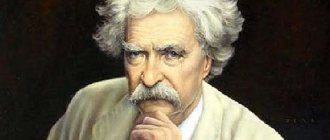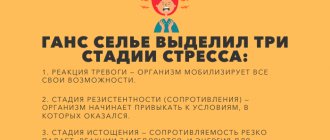The term “resource state” is often encountered by those interested in psychology and NLP. But every person needs to know about it. It is also worth learning to enter a resource state and live in it. This will help you use your internal energies to solve simple and complex problems.
It is especially important to learn the resource state technique for people who have lost motivation. You are probably also familiar with this situation. And everything seems to be fine, but there is no strength left to move forward. And there is no longer any desire. It seems that it will not be possible to achieve success. What to do in this case? How to replenish resources?
What does resource state mean: short and clear
Resource (resource state) – the presence of spiritual, emotional, physical, mental strength and energy to solve current problems. Essentially, this is the ability to “move mountains” – a feeling of inner balance and confidence. Some people associate such a flow state with absolute happiness. Perhaps this is true.
Maintaining a resource state requires a certain balance - the settlement of 5 factors. This:
- physical health;
- intrinsic motivation;
- emotional comfort;
- task focus;
- time.
Working with resource states requires knowledge of certain methods and techniques, as well as an understanding of which resource needs to be worked on.
Learn to take care of yourself
This applies even to small things. Each person will express this concern differently. “Learn not only to listen to your own body, but also to anticipate your desires and create a comfortable environment for yourself,” says Olga Turovtseva. “For example, take a comfortable position, put a glass of water next to you, ventilate the room, give yourself the opportunity to distract yourself during hard work for a few minutes to warm up.”
Types of resource states
The human body needs balance. That is why the resource is considered comprehensively. The list of resource states includes:
- Physical well-being – cheerfulness, full of strength.
- Psychological attitude – self-confidence, ability to take on and complete assigned tasks.
There is much debate about whether rest is an important component of this flow of well-being. On the one hand, in the “flow” you can work almost around the clock - sometimes things are burning in your hands, and there is no desire to stop. On the other hand, rest is a necessity. Without it, managing resource states gradually becomes a problem, since energy simply runs out.
It’s not always possible to catch the right work flow and bring back positivity and enthusiasm. Moreover, general well-being is negatively affected by external factors - lack of money, everyday fatigue, nervous overload. What to do in this case? There are special practices and exercises - with them you can achieve a resourceful state simply and quickly.
Select the city closest to you
Moscow
St. Petersburg
Aachen Abakan Aban Avimor Alma-Ata Almaty Alushta Amsterdam Anapa Antalya Apsheronsk Armavir Arkhangelsk Astana Astrakhan Athens Baku Balakovo Balashikha Balashov Bangkok Baranovichi Barnaul Barcelona Belgorod Belombre Berdsk Biysk Blagoveshchensk Blagoveshchensk (Amur region) Borisogleb SK Bratsk Brno Bryansk Budapest Budennovsk Burgas Bushtyna Varna Vienna Vidnoye Vitebsk Vladivostok Vladikavkaz Vladimir Volgograd Volgodonsk Volzhsky Vologda Volchikha Voronezh Voskresensk Votkinsk Gelendzhik Georgievsk Gomel Goryachy Klyuch Denver Jacksonville Dinskaya Dmitrov Dnepropetrovsk Dolgoprudny Domodedovo Donetsk Dorogobuzh Dresden Yekaterinburg Essentuki Zheleznogorsk Zheleznodorozhny Zhi Tomir Zhukovsky Zaporozhye Zvenigorodka Zelenograd Zimovniki Ivanovo Jerusalem Izhevsk Irkutsk Yoshkar-Ola Kazan Kalach-na -Don Kaliningrad Kaluga Kamensk-Uralsky Kandalaksha Kemerovo Kerch Kiev Kineshma Kirov Kirovograd Chisinau Klimovsk Kovrov Kolomna Komsomolsk-on-Amur Korolev Kostanay Kotka Krasnoarmeysk Krasnogorsk Krasnodar Krasnoyarsk Kremenchug Krivoy Rog Kuznetsk Kurgan Kursk Lazarevskoye Leninsk-Kuznetsky Lesnoy Liman Lipetsk Lisichansk Liski Lobnya London Lugansk Lutsk Lviv Lyubertsy Magnitogorsk Manchester Manganese Morocco Marseille Makhachkala Megion Melitopol Menzelinsk Miass Millerovo Mineral Waters Minsk Minusinsk Mogilev Mozhaisk Moscow Murmansk Mtsensk Mytishchi Naberezhnye Chelny Nazarovo Nalchik Nakhabino Nakhodka Not specified Nefteyugansk Nizhnevartovsk Nizhnekamsk Nizhny Novgorod Nikolaev Nice Novokuznetsk Novorossiysk Novosibirsk Novouzensk Novocherkassk Novoshakhtinsk Noginsk New York Obninsk Odessa Odintsovo Omsk Orel Orenburg Orekhovo-Zuevo Pavlograd Paris Penza Perm Petrozavodsk Podolsk Polotsk Prague Protvino Pskov Pushkin Pushkin Pyatigorsk Ramenskoye Revda Reutov Riga Rostov-on-Don Rybinsk Ryazan Salavat Salsk Samara San Mateo St. Petersburg Saransk Saratov Svatovo Sevastopol Severodvinsk Semipalatinsk Sergiev Posad Serpukhov Simferopol Smela Smolensk Soligorsk Sosnovy Bor Sochi Stavropol Stary Oskol Sterlitamak Stupino Sumy Syktyvkar Tambov Tashkent Tbilisi Tver Tel Aviv Timashevsk Tiraspol Tikhvin Tikhoretsk Togliatti Tomsk Toronto Tuapse Tuymazy Tula Tyumen Uzhgorod Ulan-Ude Ulyanovsk Usolye-Sibirskoye Ussuriysk Ust-Kut U fa Ukhta Frankfurt am Main Frolovo Khabarovsk Haifa Kharkov Helsinki Kherson Khimki Khmelnitsky Zurich Chara Cheboksary Chelyabinsk Cherepovets Chita Mines Shymkent Shchelkovo Elektrostal Engels Yalta Yamalo-Nenets Autonomous Okrug Pravokhettinsky Yaroslavl Yartsevo Yasinovataya
How to enter a resourceful state: 5 techniques for women and men
Many specialists - psychologists, coaches, NLP practitioners - do not need advice on how to restore a resourceful state. They just live in it. They also know the secrets of creating a resource state in seconds. They tune in to the desired wavelength and solve assigned tasks productively.
Everyone can learn this.
- Anchoring is a quick restoration of a resource state based on fixed emotions and events. We’ve already talked about anchors , so everyone can make a positive impression of the necessary sensations.
- Modeling is the use of resource state energy in advance. Live as if you are already successful, rich and effective. Don't complain. Move forward. Smile. Create a better model of yourself and draw strength from there.
- Rest as a way to restore and replenish resource status. Physical health is a complete reboot. Travel, walks, hobbies, physical activity and enough sleep. Any plan should include weekends and fasting days. Don't forget this.
- Setting goals. The resource state in quarantine is melting before our eyes. Therefore, we set goals – long-term, and most importantly, short-term. Specific completed tasks inspire confidence and lay the foundation for moving forward.
- Small steps. A method similar to the previous one to ensure resource status. Movement towards any goals should be carried out in small steps - mini-actions. The visible result inspires, which is what is needed to replenish the resource.
- Meditations. They always help. Musical tracks and special exercises are aimed at clearing the head of various thoughts and creating a positive mood.
We figured out how to find a resource state, but how to preserve it for a long time?
Notes
- ↑
- Ananyev B.G.
On the problems of modern human science. - St. Petersburg: Peter, 2000. - 288 p. - Ananyev B.G.
Man as an object of knowledge. - St. Petersburg: Peter, 2001. - P. 4. - 288 p. - Aristotle.
Metaphysics. About the soul. // Op. in 4 volumes - M.: Mysl, 1976. - 552 p. - Ganzen V. A., Golovey L. A.
The relationship between potentials and tendencies in the structure of individuality // Personality and activity. - L.: Publishing house Leningr. state University, 1982. - Rybalko E. F., Golovey L. A.
Potentials of age-related development // Psychology: Textbook / Ed. A. A. Krylova. - M.: Prospekt, 1998. - P. 239-240. — 584 p. — ISBN 5-7896-0050-6. - Grishchenko N. A.
Intellectual potential // Psychology: Textbook / Ed. A. A. Krylova. - M.: Prospekt, 1998. - P. 186-188. - Maklakov A. G.
Fundamentals of psychological support for professional health of military personnel. — Author's abstract. diss. doc. psychol. Sci. - SPb.: St. Petersburg. state University, 1996. - 37 p. - Kondakov A. M.
Education as a resource for the development of personality, society and state / Diss. doc ped. Sci. - M.: Institute of Contents and Teaching Methods RAO, 2005. - 322 p. - Druzhilov S.A.
Individual human resource as the basis for the development of professionalism. - Voronezh: Scientific book, 2010. - 260 p. — ISBN 978-5-98222-702-7. - Tolochek V. A.
Activity styles: resource approach. - M.: Publishing house "Institute of Psychology RAS", 2015. - 366 p. — ISBN 978-5-9270-0299-3.
Techniques: how to gain and maintain a resourceful state
How to return and stay in a resourceful state - simple and effective techniques that do not require special knowledge:
- Preparations for future affairs. Everything is simple here: we create the mood for active or mental activity in advance. This can be a pre-created report form that opens immediately after you boot your computer in the morning. Sportswear prepared in the evening for a morning run. Peeled vegetables for future lunch.
- 100 achievements and successes. When your mood rapidly drops to zero, you can bring yourself back to tone with a list of success. Just write 100 achievements for any period - even the smallest ones. The production of the joy hormone serotonin will return the resource state to normal.
- Alternate between your favorite and necessary things. Pleasant tasks will invigorate you and return you to work. Checked!
- Avoid emergency situations. Planning taking into account Covey squares will help you distribute tasks according to importance and urgency and get everything done without unnecessary fuss and nerves.
- Keep your focus. Stay mindful and avoid distractions. A little practice and you can do it!
We can talk about the resource state for a long time. But you can limit yourself to simple advice: catch the feeling of “flow” at least once. Fix it with any anchor (smell, music, action) and experience positive feelings of energetic strength at any time when you need it.
Interesting read:
Planning goals and objectives for the year - 3 ways and several life hacks
How and how much sleep you need: to get enough sleep
Emotional burnout: signs and symptoms - how to fight and preventive measures
Psychology training on Resources
Lesson #21: My resources.
Target:
Familiarity with resource capabilities in difficult situations.
Tasks:
Plan:
Lesson program:
1. Greeting “My actions are my expressions of mood.”
Goal: create a working atmosphere by speaking about your condition.
The presenter invites the participants to get ready for work. To do this, he asks each participant to imagine what movement he would associate himself with.
Instructions: Express your mood or state in action. This can be any gesture or a set of movements that may be similar to the movements of animals or any mechanisms. And then explain what and how you think is reflected in the action. For example: “I depicted a movement similar to the movement of a turtle, because that’s how I feel today: sluggish, slow and sleepy.”
2. Discussion “Are resources just “external building blocks”?”
Goal: through a joint discussion, identify the definition of a personal resource and specify the concept.
The facilitator begins the lesson by clarifying the concept of “resource”. He can write down answer options on the board.
Instructions: As in previous lessons, today we will start by finding out what this mysterious concept of “resource” is. After all, what we are doing here is not a geographical search for natural resources. How do you think this concept can be connected with a person, with his personality?
Explanation.
The presence of certain resources, potentials, and opportunities expands the field of activity of an individual, making significant goals in life more achievable. Resources, as it were, subjectively increase a person’s value in the eyes of others and in his own opinion of himself, making him stronger, more significant and productive. When we make a judgment about another person, we take into account not only his current situation, but also potential opportunities and resources, since reserves and resources are, in a certain sense, the significant capital of each individual [2].
Resources are divided into social and personal, in other words, external and internal.
External resources
are material values, social statuses (roles) and social connections that provide support for society and help a person from the outside.
Internal resources
are a person’s mental personal potential, character and skills that help from the inside. However, the division into external and internal resources is quite arbitrary. Those and other resources are closely related, and with the loss of external resources, the loss of internal resources gradually occurs. Reliable external resources ensure the safety of internal resources, but only if these internal resources already exist. Sometimes a person receives external resources without yet having internal ones, and this is like only external decoration that can crumble at any moment.
The greater the already acquired internal resources, the higher a person’s ability to restore external resources in the event of loss, the greater his resistance to the environment, the stronger his subjectivity, will, ego integration, locus of control, self-awareness and self-efficacy, stress resistance while maintaining the integrity of the individual. It is important to understand that the strongest internal resources do not replace external ones, but they allow you to exist for some time without external resources, restore them from scratch, build them up in any situation and ensure super-adaptation, resisting the environment alone.
A person cannot exist on internal resources alone for a long time; he must find a suitable environment and enter into mutual exchange with it, provide with its help all his needs, from the lowest to the highest, otherwise after some time the internal potential will be exhausted. That is why, ideally, a person should constantly take care of maintaining and increasing these and other resources, and the stronger his internal resources, the easier it is to increase external ones. And the more he himself increased external resources, the stronger he became inside.
To understand the problem of resources, one must realize how dynamic this process is, how much it is in motion. You cannot accumulate resources once and gain power forever. Resources require constant interaction with the environment, constant development and renewal. By giving away external resources and not acquiring others in return, a person weakens his external position, which cannot but affect his autonomy, no matter how strong he once was.
You can interact not with specific individuals, but with a cultural social layer, reading books and comprehending art, you can lead a fairly secluded lifestyle, engaging in creativity addressed to descendants, but this is also social interaction, and sometimes very intense, more intense than superficial parties , but outside society there are no sources of energy. By treating the world around us with hostility or without interest, a person very quickly exhausts himself. Love, passion, delight, curiosity, inspiration, admiration, amazement, interest, sympathy, attraction, craving, search, desire, desire, thirst - all these are ways to connect to new sources of energy.
3. Exercise “What new things will I discover for myself?”
Goal: identifying and specifying ways to replenish internal resources.
The presenter invites the participants to divide into teams, each of which will schematically depict on sheet A3 their methods of replenishing internal strength.
Instructions: Now we will divide into teams, each of which will receive a large sheet of paper and a set of visual aids. The task of each team within 15 minutes is to depict ways that help you replenish your internal strength. Afterwards, each team will have the opportunity to present their options.
The presenter can write down options on the board (flipchart).
4. Warm-up “Options for expressing thoughts.”
Goal: to switch attention in order to prevent fatigue, to invigorate with physical activity.
Participants sit in a circle. One has a ball, a simple phrase is given, which is then consistently supplemented with sentences that are logical in content. With each throw of the ball there is a new sentence(s).
Instructions: Let's distract the child's attention a little and play a game with the ball. Now in a circle I will give one person a ball, which he can pass to any participant, but at the same time voicing the beginning of a sentence, which must be completed by the participant who caught the ball. The ball is thrown not in a circle, but randomly. It may be that at some point, the recipient of the ball finds himself in a difficult situation, the game begins with a different phrase.
5. Exercise “Calm, just calm.”
Purpose: a relaxation procedure, during which participants turn to their internal resources; Relieving psycho-emotional tension, muscle relaxation, increasing self-confidence.
The presenter invites participants to listen to the text for relaxation. During the process, if technical capabilities allow, you can turn on calm music that best suits the presentation of this picture. The text should be read in a quiet and calm voice, making periodic pauses for better presentation.
Instructions: Choose the most comfortable body position. Close your eyes and take deep breaths several times, beginning to relax (pause 20 seconds). Allow your breathing to flow naturally, in a calm, relaxed rhythm. Your belly rises as high as possible when you inhale and falls as low as possible when you exhale. It seems that you are breathing from your stomach, not from your chest (pause 15 seconds). Your breathing will now become slow and regular (pause 30 seconds). Now focus on the parts of your body that I will mention and release any tension you feel in them. First the head, face and neck (pause 20 seconds). Relax your shoulders and arms (pause 20 seconds). Torso (pause 15 seconds). Upper legs (pause 15 seconds). Now the lower legs and feet (pause 15 seconds). Now you feel comfortable and wonderfully relaxed in your body (pause 15 seconds).
Imagine that you are standing at the foot of a huge mountain. You are surrounded by stone giants on all sides. Maybe it's the Pamirs, Tibet or the Himalayas. Somewhere in the heights, lost in the clouds, the icy peaks of the mountains float. How wonderful it must be up there! You wish you were there. And you don't have to reach the top by climbing difficult and dangerous steep slopes, because you... can fly. Look up: a dark moving cross is clearly visible against the sky.
This is an eagle soaring over the rocks... A moment - and you yourself become this eagle. Having spread your mighty wings, you easily catch the elastic currents of air and glide freely in them... You see torn, ragged clouds floating below you... Far below - toy groves, tiny houses in the valleys, miniature people... Your keen eye is able to discern the smallest details the picture unfolding before you. Take a closer look at it. Take a closer look...
You hear the soft whistle of the wind and the sharp cries of small birds flying past. You feel the coolness and gentle elasticity of the air that holds you high. What a wonderful feeling of free flight, independence and strength! Enjoy it...
It is not difficult for you to reach any peak that is highest and inaccessible to others. Choose a convenient area for yourself and go down to it, so that from there, from an unattainable height, you can look at what remains there, far away, at the foot of the mountains... How small and insignificant the problems that trouble you seem from here! Evaluate whether they are worth the effort and stress you have experienced! The calmness bestowed by heights and levels gives you impartiality and the ability to delve into the essence of things, to understand and notice what was inaccessible there, in the bustle. From here, from above, it is easy for you to see ways to solve the issues that tormented you... With amazing clarity, the necessary steps and the right actions are realized... Pause.
Take off again and experience the amazing feeling of flying again. Let it be remembered by you for a long time... And now again be transported to yourself, standing at the foot of the mountain... Wave your hand goodbye to the eagle soaring in the sky, which made a new perception of the world available to you... Thank him...
You are here again in this room. You have returned here after your amazing journey...”
After reading, you can offer two options for work.
Option 1.
The facilitator invites participants to speak about their feelings and their condition. Someone can also tell what he saw.
Option 2.
The presenter can invite the group to take sheets of paper and visual aids, and depict what they saw while they were “flying.” It could be an abstract drawing that expresses emotions. Participants can then talk about their drawing and impressions.
You can find other visualization options in Appendix No. 3.
6. Exercise “I can do anything.”
Goal: search for available internal and external resources.
The facilitator invites participants to indicate on a piece of paper 10 of their qualities that help them cope with difficulties, as well as 10 external resources.
Instructions: Having talked about resources, I would like to understand how you independently evaluate your resource baggage. In order to determine its contents, it is necessary to find out for myself what I can fill this luggage with. To do this, I invite participants to write on pieces of paper 10 of their qualities that help me cope with difficulties, and 10 external resources, which can include not only some people, but also areas of activity.
7. Completion.
Purpose: closing the group, expressing gratitude of the participants to each other.
The leader closes the group's work.
Instructions: Our classes have come to an end. I think that much of what we found out, worked through and discovered for ourselves was useful for you and will be useful in the future. I would like to thank everyone for their active participation and involvement in the activity, since it was thanks to your active position that we were able to expand the horizons of our repertoire of behavior.
Literature:
- Komissarova M. https://evo-lutio.livejournal.com/41294.html
- Solovyova S.L. Personal resources. [Electronic resource] // Medical psychology in Russia: electronic. scientific magazine 2010. N 2. URL: https:// medpsy.ru (access date: 02/12/2018).










